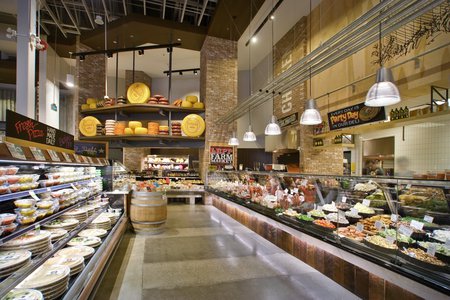
Netflix vs Blockbuster Repeated: It's Adapt or Die in the Grocery Industry
In the early months of the year 2000, Netflix CEO and co founder Reed Hasting had a meeting with Blockbuster’s CEO John Antioco about forming a partnership. During the meeting, John all but laughed Reed out of theoffice, citing that Netflix was still a niche business. Fast forward 16 years later and Netflix is a billion dollar company with 75 million subscribers, while Blockbuster is just a fond memory in many early millennials minds. This is one of the biggest “adapt or die” failures in recent history. The grocery industry is going through a similar trend. This “adapt or die” mentality has forced big grocery chains into acquisition, forced some into bankruptcy, and left some lost, tirelessly searching for a winning strategy. 2016 is a big year for the grocery industry. Here are 3 evolving market trends in the industry.

1.Smaller Stores- Traditional grocers have lost 15% of market share over the last decade and are forecasted to lose another 2.8% by 2018. As a result of this decline, traditional grocers have turned to smaller more intimate stores. Square footage of the American grocery stores has steadily declined in the past 20 years. This has caused stores to have fewer produce and product offerings. Even big box stores, like Costco, have begun consolidating and searching for new markets to enter. In fact, Costco has secretly been testing selling supplies specifically tailored to small business. You can read about it here.
As a result of this smaller store trend, many chains are looking for ways to conserve space. This is beginning to be more and more important because of the growing demand for prepared foods and customer satisfaction. This is fueled by the emergence of the buying power of the millennial generation. 9 out of 10 millennials prepare dinner at home 3+ times a week and 75% want to be better cooks. This generation values experience and demands a personal touch, which is why many stores are adding high end coffee shops, grills, bars and cooking classes. We will see more and more investments in the shopping experience in the next couple of years.
2.Authentication of Fresh Food- It is no secret that people love fresh food and produce, but now shoppers want evidence of the freshness of the food. This has caused many chains to both search for ways to provide that evidence, as well as, improve the efficiency of their processes to keep their items fresh. Enter BigData. BigData is basically large sets of data that needs specialized tools to organize and analyze. With the advent of new technologies, especially the cloud, grocery chains are now able to analyze all of their data throughout the supply chain. This means that they will have higher transparency with their customers and will increase the importance of the relationship with their suppliers.
3. Bioregions- Local food continues to be an important trend in the grocery industry. The problem is there is no specific definition of what “local” actually means. Does buying an apple from Washington, while in Washington count as local? Or does buying a Washington apple, while in Oregon count as local? This has heightened micro regional competition as local growers are pitted against each other and are excluded from opportunities in other regions. As a result, the emphasis on bioregions is beginning to take root in the industry. A bioregion is a region, whether it is a state, group of states, or geographic region that is known for growing a certain produce. This is not a brand new trend as we already have Idaho Potatoes and California Raisins, but we will start to see new regional branded items emerge.
It is an exciting time to work in the produce and grocery business. After years of static growth, grocers have begun to develop new technologies, new stores, and new strategies. This is all centered on the changing demographics and demands from the Millennial Generation. Many new grocery stores have changed their overall strategy and store layouts to make grocery shopping more of an experience rather than a chore. I am excited to see where the industry is going in the future as new innovative companies enter the market, like Amazon and Uber. As I like to say, innovation breeds change and without change there is failure.